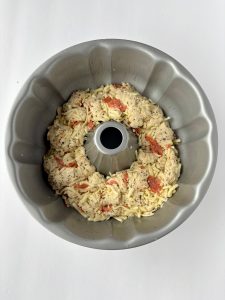 As we begin the new year, some of you may be thinking about changing your eating habits. The typical behaviours I hear involve cutting out certain foods or ingredients, such as cutting out sweets, cutting out snacks or cutting out fried foods.
As we begin the new year, some of you may be thinking about changing your eating habits. The typical behaviours I hear involve cutting out certain foods or ingredients, such as cutting out sweets, cutting out snacks or cutting out fried foods.
This month, I invite you to try a different mindset and consider nutrition by ADDITION. This is a way of eating that puts the focus on ADDING nutritious foods to your meals, rather than focusing on eliminating foods. Nutrition by addition is empowering because it prioritizes what you can eat and what you can do, rather than what you can’t. It helps you see food as nourishing and enjoyable, not something that needs to be feared. Overall, nutrition by addition can improve the nutritional value of your meals and help you build a positive relationship with food.
Here are some ideas to get you going.
To eat more fibre in your day…
- Add mushrooms and peppers to a stir-fry or pasta dish.
- Add a can of kidney beans to a soup or salad.
- Add a handful of nuts to your snack.
To eat more protein at breakfast…
- Add hemp seeds to your hot oatmeal.
- Add Greek yogurt in a smoothie.
- Add an egg or a slice of cheese on a toasted bagel.
To eat more veggies…
- Add tomatoes to a sandwich.
- Add sliced cucumbers to a grain bowl.
- Add a salad with dinner.
What else can you ADD to your meals to boost the nutrition? Let me know in the comments.








